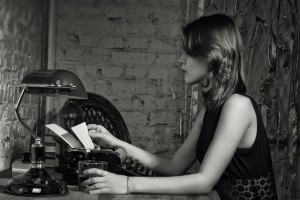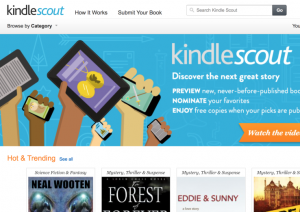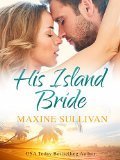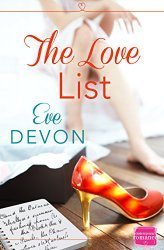Hannah Fielding's Blog, page 93
November 26, 2014
Five golden rules for romance writers
 To date, I’ve written six fairly long romance novels, two of which are published and the rest are in the pipeline. That equates to many, many hours of researching, planning, writing, editing and marketing – and learning; so much learning about writing romance and publishing process romance. A question I’m commonly asked is: ‘What advice would you give an aspiring romance writer?’ I don’t claim to be an expert on the subject – really, who is? – but the following outlines some of the lessons I’ve learned on my journey from being a little girl who dreamed of writing romance to being a grown woman who really does write romance, every day.
To date, I’ve written six fairly long romance novels, two of which are published and the rest are in the pipeline. That equates to many, many hours of researching, planning, writing, editing and marketing – and learning; so much learning about writing romance and publishing process romance. A question I’m commonly asked is: ‘What advice would you give an aspiring romance writer?’ I don’t claim to be an expert on the subject – really, who is? – but the following outlines some of the lessons I’ve learned on my journey from being a little girl who dreamed of writing romance to being a grown woman who really does write romance, every day.
1. Write what you passionately want to write.
Jeffrey A. Carver conveys this beautifully as follows: Write from the soul, not from some notion what you think the marketplace wants. The market is fickle; the soul is eternal. To write a good love story, you have to be really passionate about that story. You have to write what you most wish you could buy from a bookstore and read for yourself. Yes, you must know about marketability and genre norms, but what is most important is that this is a story you care deeply about. Writing that bores the writer bores the reader. Writing that moves the writer moves the reader. Write the love story you wish was your own!
2. Make the lovers forgivably flawed.
First, the heroine. Readers want to be able to identify with her – to understand how she thinks and feels and acts, and perhaps even to imagine themselves in her shoes. Perfection is off-putting. Say the heroine is a very successful businesswoman who’s climbed the corporate ladder with no hiccups, and she’s beautiful, and she dresses impeccably, and she never misses an aerobics session, and her house is immaculate, and she has an array of similarly perfect friends; oh, and she’s in perfect control of her emotions. First of all: really? That character sounds far too fictional to me. Second of all: how dull to read about her.That kind of book will simply irritate the reader, who’ll feel inferior for her own flaws. All characters need to feel real to the reader, which means they’re imperfect. In my first book, Burning Embers, for example, the heroine’s rather naïve, and in The Echoes of Love the heroine is held back by her fear of getting hurt.
As for the hero, the writer has to carefully strike a balance: the man must be attractive, but not unattainable; strong but not overbearing; chivalrous but not sexist; sexy but not vain; masterful but not mastering. Women notoriously accept and even honour flaws in men – scars don’t sully physical attraction; a touch of arrogance doesn’t hurt respect and affection. In fact, it’s possible to push the imperfections of the male protagonist quite far – in Burning Embers, for example, Rafe is a womaniser. What’s essential is that any big flaws in the hero are forgivable; that his backstory allows the reader to understand the imperfections and accept them. In the case of Rafe, that means realising that he womanises as a means of simultaneously punishing himself and protecting himself due to an incident in his past.
3. Foil the protagonists with antagonists.
In literary terms, a foil is a character who contrasts with a protagonist, thereby highlighting qualities in the protagonist. Any loves story requires conflict, and so most stories contain another woman or another man who threatens the developing love between the protagonists. If the other woman is a foil for the female lead and the other man is a foil for the male lead, this further cements the leads’ characters, and helps each of the characters detemerine what his or her path should be. For example, in Burning EmbersRafe has a mistress, Morgana, and she is Coral’s foil – where Coral is naïve, Morgana is seductive and experienced; where Coral’s beauty is English and innocent, Morgana is dusky and exotic. In The Echoes of Love, Paolo’s foil is Count Umberto, a man who would like to be with Venetia. But as events unfold it becomes clear that next to Umberto, Paolo is the more honourable man by far.
4. Take your characters to amazing places.
I situate my romances in beautiful, divinely romantic locations. But within the overarching setting I’m always careful to take the characters to places that inspire soul-searching and connection – a hot-air balloon ride over the African savannah at sunset, for example, in Burning Embers. Just as place inspires writers, it inspires lovers – and readers of romance! The writer of a love story is in the enviable position of being able to control the story and take it wherever she pleases. Why place lovers somewhere boring, like a train station café, for a heart to heart, when you can put them somewhere with a view that makes their hearts sing? If the outer landscape is amazing, the inner one is bound to be too.
5. Always think from an emotional standpoint.
What I love most about the romance genre is that it’s unashamedly emotional. The writer’s job is simple: to make the reader feel. The immense popularity of the genre comes down to readers enjoying the way a romance novel makes them feel: the escape from daily life into a world that reawakens the surge of feelings you get when you first fall in love. No wonder some romance readers call themselves ‘romance junkies’ – the love story is like a fix that gives you a wonderful rush of feelings. So when writing romance, you always have to be thinking about the emotion. Every element of the story, every action of a character, every description of a person or a place – they must all be designed to move the reader on an emotional level. Certainly in the first draft, don’t hold back in feelingas you write; later, when you edit, you can tone down overwriting. For me, writing from an emotional standpoint is the fun of writing romance – what a wonderful way to spend a day: lost in a fantasy world that makes you feel love and passion and hope.
November 24, 2014
‘Start with a bang’
 Here’s a piece of advice commonly given to writers:
Here’s a piece of advice commonly given to writers:
Start with a bang and you won’t end with a whimper.
It’s frequently attributed to the poet TS Eliot, but in fact he didn’t give this guidance; he attributed it to an ending, not a beginning, at the close of his poem ‘The Hollow Men’:
This is the way the world ends
This is the way the world ends
This is the way the world ends
Not with a bang but a whimper.
Still, I believe that the advice is sound: if you start writing at a time of intensity in the story, you’re more likely to engage the reader. I believe this is especially important in the romance genre. Romance is dramatic and deeply emotional, especially at the beginning, so the start of any love story should have the sense of a ‘bang’.
My debut novel, Burning Embers, opens thus:
Coral Sinclair was twenty-five, and this should have been her wedding night. Instead, she watched a full moon sweep the Indian Ocean with silvery beams as a silent ship carried her through the night, its path untroubled by the rolling swell. It was misty, the air was fresh, and a soft breeze blew through her flowing blond hair. A solitary passenger on deck, outlined by a strapless, white-silk evening dress, she stood upright and still, her slender fingers clenching the rail, her voile scarf floating behind.
Coral could not sleep. She gazed into the tenebrous light, feeling helpless, lonely, and utterly wretched. Not a star interrupted that dense unity, not the smallest star, the tiniest speck of hope. The only sound was the thrumming of the ship’s engines and the rhythmic echo of the waves smashing relentlessly against its hull.
I endeavored to make this an intense opening to the book. This should have been Coral’s wedding night but – bang! Everything has unraveled and instead she’s on a ship. All alone. The language conveys the emotions with which Coral is struggling: solitary, tenebrous, helpless, lonely, utterly wretched, hope, smashing relentlessly…
As the scene unfolds, Coral meets an enigmatic stranger. Unlike Rose and Jack’s first fateful meeting aboard the ship Titanic, there is no grande drama here – no desperate thought of suicide; no near-fall into the ocean necessitating a rescue. In this scene I let the emotional connection of the characters and Coral’s inner turmoil create all the interest. Readers who enjoyed the book told me that this first scene really drew them into the story; it affected them emotionally. Bang.
In The Echoes of Love I open the book at a masquerade party as follows:
The clock struck midnight just as Venetia went past the grand eighteenth-century mirror hanging over the mantelpiece in the hall. Instinctively she looked into it and her heart skipped a beat. In the firelight she noticed that he was there again, an almost illusory figure, leaning against the wall at the far end of the shadowy room, steady eyes intense, watching her from behind his black mask. An illusory figure indeed, because when Venetia turned around he was gone.
This sets the atmosphere and hints at the central theme of the book – that of illusion versus truth. The masquerade is an important visual element of the book for the reader to hold in their mind; hence the masked woman on the book cover. But I only allow a few paragraphs for describing the party before launching into the very height of drama:
Suddenly Venetia saw two figures spring out in front of her from the surrounding darkness. They were enveloped in carnevale cloaks, with no visible faces, only a spooky blackness where they should have been. A hand materialised from under the all-encompassing wrap of one of the sinister creatures and grabbed at her bag. Chilled to the bone, Venetia tried to scream but the sound froze in her throat. Struggling, she hung onto the leather pouch which was looped over her shoulder and across her front as she tried to lift her knee to kick him in the groin, but her aggressors were prepared. An arm was thrown around her throat from the back and the second figure produced a knife.
Just as he was going to slash at the strap of her bag, an imposing silhouette emerged from nowhere and with startling speed its owner swung at Venetia’s attacker with his fist, knocking him off balance. With a grunt of pain the man fell backwards, tripping over his accomplice who gave a curse, and they both tumbled to the ground. Then, picking themselves up in a flash, they took to their heels and fled into the hazy gloom.
‘Vatutto bene, are you alright?’ The stranger’s light baritone voice broke through Venetia’s disoriented awareness, and he looked down anxiously into her large amber eyes.
Bang: Venetia and Paolo have met in a dangerous situation, and Paolo has taken the role of rescuer, which, once she recovers from her shock, will not sit entirely well with the independent Venetia! Again, I choose dramatic words and phrases to build the atmosphere: suddenly, spooky blackness, all-encompassing, sinister,grabbed, chilled, scream, froze, struggling aggressors, slash, imposing, startling speed, attacker, gloom, anxiously.
In both books, I made a conscious choice to have the lovers meet right at the outset, because these are the love stories of those characters, and so they are what matters most. But in any story conflict is required, and I wanted to place that conflict at centre-stage from the start. In Burning Embers the conflict is internal; in The Echoes of Love it is, initially, external.
Henry Wadsworth Longfellow wrote: Great is the art of beginning, but greater is the art of ending. When you’ve tried to commence a story on a ‘bang’, it becomes all the more important that the conclusion is explosive in its power to create an emotional reaction. Of course, I won’t give away my book endings here, but I hope that they build to an emotive climax and that the only whimper that remains afterwards is that of a reader wishing for more…
November 21, 2014
His Island Bride by Maxine Sullivan
From the blurb:
When JaceJardine is asked to return to his family’s island resort after years spent in the city, he knows Wedding Belles Resort must be struggling, but when he arrives he finds the business on the brink of financial ruin.
The solution? A big wedding and happy marriage to show the media, and potential couples, that love and romance continue to bloom at the resort. But no couples are available at such short notice – certainly none that can be trusted to stay together until the business is back on its feet. So the responsibility falls to determinedly single Jace, who suddenly finds himself in the market for a bride.
But who could he possibly ask to be his better half in this marriage of convenience? Who better than the resort’s wedding planner, Brooke Martin. Brooke has a vested interest in keeping the business afloat, and over the years has become attached to the Jardine family.
But Brooke and Jace were once lovers, and Brooke is hiding a painful secret from their time together. Will they be able to keep up the façade and help bring the business back from the brink? Or will their sizzling chemistry and troubled past threaten their carefully constructed plan?
I requested this book on NetGalley because the cover is beautiful and the blurb intrigued me. I confess I’ve a soft spot for ‘forced to marry for convenience, not love’ storylines; you just know somewhere along the line business will dissolve into pleasure!
The book did not disappoint: so much emotion shines through in the storyline, and I found myself so gripped that I read the story in two sittings. I love the island setting (I found myself rather wistful and wishing I could live somewhere so idyllic and away from the hustle and bustle), and I love the idea of a wedding-destination hotel. What a wonderful establishment to set up and run – the very epitome of romantic; but of course how credible it is that a run of divorces could be bad for business!
For me, this book is character led, and both Jace and Brooke are the kind of characters that make you just have to read on to discover their pasts, presents and futures. I love the fact that both characters have a good deal of honour and loyalty to family and the local community – both will enter into a sham marriage just to protect those they love and ensure the hotel, the main source of income for the people, is secure.
There’s such an honesty to writing that it is impossible not to believe in these characters. For example, Jace and Brooke were together years ago, but Jace left Brooke without much of a thought, focusing instead on his own future, which is saddening but realistic. The realism extends into the character’s chemistry – such passion between them!
But above all the element of the book that really affected me was Brooke’s secret (I won’t spoil the plot by explaining that here). It’s heart-rending and terrible and so powerfully affects who she is and how she relates to Jace – poor, oblivious Jace. When a storm strikes and the characters are plunged into danger, will the truth out – and when it does, will Jace stand by Brooke? You see why I stayed up late to read to the end: I just had to find out!
Compelling, moving, passionate – I heartily recommend this book.
His Island Bride is available now from Amazon; click on the book cover below to visit the store.
November 17, 2014
The dream of being a writer: What does it really mean?
 The phrase ‘dream of being a writer’ is a common one that dates back a long way. Remember Josephine March in Louisa May Alcott’s 19th-century Little Women series? She ‘dreamt of being a writer’. But what exactly does that mean? What is the dream exactly?
The phrase ‘dream of being a writer’ is a common one that dates back a long way. Remember Josephine March in Louisa May Alcott’s 19th-century Little Women series? She ‘dreamt of being a writer’. But what exactly does that mean? What is the dream exactly?
Once upon a time – in Jo March’s time – the dream of being a writer was simple. It was about two things: having the freedom to carry out the process of writing, and to enjoy that; and writing something that others may read and enjoy.
The process was, I think, the most important element of the dream. From Little Women:
“Every few weeks she would shut herself up in her room, put on her scribbling suit, and fall into a vortex, as she expressed it, writing away at her novel with all her heart and soul, for till that was finished she could find no peace.”
Writers know well that process. It’s exhausting, it’s grueling, it’s emotionally draining – but it is, to coin a phrase by writer Oriah Mountain Dreamer, ‘what we ache for’.
As for the sharing of the writing – the publication; that was part of the dream. But how far did the dream of being read and appreciated as a writer extend? Not much further than impressing peers and family, getting some recognition and perhaps, in the wildest of dreams, becoming sufficiently well-read to be respected by critics and paid sufficiently to write full time.
That was then. This is now, when publishing books is big money, and writers can, and do, dream big. Take The Hunger Games as an example. It’s available in paperback with various cover design versions. It’s been made into a blockbusting movie franchise that has broken several box-office records. You can buy all manner of merchandise, from jewellery to apparel. And this week news was announced that a Broadway producer is creating a massive stage show for the book that will be shown in a brand-new purpose-built theatre located next to Wembley Stadium in London. Did the Hunger Games author, Suzanne Collins, dream this big? Perhaps not – but without doubt all these developments are inspiring writers around the globe.
These days, then, the ‘dream of being a writer’ may mean dreaming of:
Red-carpet premieres of the film of your book
Bands commissioned to write music based on your book
An army of fans following each aspect of the book, and perhaps even dabbling in fan fiction
Glamorous, showbiz-style book tours
Schmoozy lunches with publishers and media professionals at a posh hotel
… and much more besides. Has ‘the dream of writing’ transmuted into a dream of being famous? When a child today says he dreams of being a writer, is he dreaming mainly of the process of writing, of hours locked away in his own story world, or is he picturing wildly successful authors like JK Rowling – is he wanting, in fact, to be a celebrity author?
I think all of the classic writers of literature would admit to wanting recognition for their talent. Only those who write only for themselves and never publish a word are truly writing for the process alone. But was there a time when recognition mattered less? When the art of writing was the dream, not what came next?
I’ve dreamed of being a writer from a young age, because I love to write. I love to come up with ideas. I love to put them down on paper. I love the journey I go on when I write. I love solving the puzzle of finding the right word to describe something. I love building characters. I love working hard on a project and seeing it grow. I even love the way writing takes me over, so that I am pulled into another world; like life has become a dream.
Back when I began writing, in my childhood, I showed my first stories to my governess and my parents, who responded enthusiastically. Encouraged, I began writing stories for classmates, who circulated them. I loved that they loved my writing – I knew I wanted to write more, to transport readers into the world of my imagination. The process and the sharing fulfilled me. As Jo March says in Little Women: ‘I’ve got the key to my castle in the air, but whether I can unlock the door remains to be seen.’
I did unlock the door. I write full time now, and I love every minute that I spend on my books. I live every day the dream of being a writer, my dream of being a writer. Everything else is but chance, not design – only the process and the hard work of building a readership are tangible, within grasp. The writing is all.
November 15, 2014
Reading: A social activity?
 Reading is often assumed to be a quiet, sedentary, solitary pursuit. If you want it to be that – if you want some peace, a sit-down, a break from socialising with others – then reading can certainly be an activity for you and you alone. But in fact, reading has a long history of being a social activity, something to share with others.
Reading is often assumed to be a quiet, sedentary, solitary pursuit. If you want it to be that – if you want some peace, a sit-down, a break from socialising with others – then reading can certainly be an activity for you and you alone. But in fact, reading has a long history of being a social activity, something to share with others.
Think, for a moment, of the old tradition of reading at the fireside. Sometimes this was done quietly, individually; but often a family member read aloud to a group. Watch a period drama, for example, and you may see a group of women sitting together, one reading while the others sew – and periodically the reading halts as the women discuss the content of the book. Early schooling quickly adopted reading as a group activity as well – children read aloud, and discussed text in groups. And of course the bedtime story has long been an essential element of a loving wind-down routine for families the world over.
Today, the concept of reading as a social activity is stronger still. A key part of educational syllabi is to encourage children to read together and to discuss stories and non-fiction texts. Book groups have soared in popularity – people are coming together to share books and their opinions in all sorts of places, from homes to coffee shops, and across all manner of genres as well.
But it is the connectivity and functionality afforded by technology that is creating the most exciting social reading developments. Sites like Goodreads are helping readers come together to discuss books and share recommendations. Anyone can share their thoughts on a book online, posting reviews on a blog or on one of the many review-sharing sites. And how about reading a book together online? SocialBook is a reading platform that allows small groups to read a book online and ‘talk’ about that book through threaded conversations that appear in the margins of the book. Bob Stein, consultant with the Institute for the Future of the Book, exemplified the concept inThe Bookseller:
[A] New York high school teacher asked the students in her advanced Spanish literature classes to read their assignments in SocialBook… they are now nearly halfway through the text, with more than 2,400 comments among the four of them. They are using the margins for many things — creating a rich glossary of terms and concepts that are unfamiliar to contemporary Spanish speakers, noting points for clarification, and discussing the wide range of historical and literary questions that this seminal novel raises. This adds up to an impressive example of collaborative reading and thinking.
Clearly, there are all sorts of possibilities here. Not only could you read a book and recommend it to a friend: you could annotate the book and then read your friend’s comments.
What all these trends towards making reading a social activity come down to is this: we don’t just want to read; we want to talk about what we read. We want to share our ideas, our opinions and our reactions. As Angela Carter said, ‘Reading a book is like re-writing it for yourself.’ As a writer, I find this very exciting. Because we write in the hope that we will make readers think, feel, react. Novelist John Cheever wrote: ‘I can’t write without a reader. It’s precisely like a kiss – you can’t do it alone.’
Making reading a social activity means that neither the writer nor the reader is alone. The words on the page are connectors that bring people together and spark sociability. Books aren’t just for people – books unite people.
November 12, 2014
Genre-specific book stores
 The idea that the conventional book store is in trouble needs no introduction. Digital publishing, book discounting by giants like Amazon, the shift from high-street shopping to online shopping: these, and other reasons, have seen many book stores close in the past few years. Those that soldier on are forced to be ever more innovative in finding ways to bring customers through the door, and to the till armed with purchases. And an interesting idea, but one trialled so far by very few, is genre-specific book stores.
The idea that the conventional book store is in trouble needs no introduction. Digital publishing, book discounting by giants like Amazon, the shift from high-street shopping to online shopping: these, and other reasons, have seen many book stores close in the past few years. Those that soldier on are forced to be ever more innovative in finding ways to bring customers through the door, and to the till armed with purchases. And an interesting idea, but one trialled so far by very few, is genre-specific book stores.
For some people, of course, the book store experience is about browsing across genres. Looking at the hotch-potch of titles laid out on display tables. Reading the blurb of a novel, then skimming a coffee-table art book, and then perhaps checking out the new picture books in search of a present for a little one. But those passionate about a particular genre of fiction may enter the big book store that stocks all sorts of titles and simply head for one section, where they spend the next few minutes seeing what’s new, and then sail out – perhaps with a new book; perhaps not – without looking at any other kind of book. How much more may that reader, that book buyer, engage if their section were bigger, brighter, more exciting – a world all on its own?
Imagine not just stores, but destinations. Places to support. Places to discover new books – and so much more. Just imagine young adult book stores. Crime thriller book stores. Literary fiction book stores. Romantic fiction book stores.
Being a romance writer, the latter idea most intrigues me. Imagine a store that’s sublimely romantic. Beautifully lit with lamps and candelabras. Playing soft, lilting music. Smelling of scented candles. Velvet armchairs and sofas scattered amid the bookcases, begging you to sit down and get lost in a book. Readers would flock there! We’d make it our second home, I think; use it as a kind of restorative therapy.
The genre-specific store is a proven entity: think of the classic comic-book store that you find in most major cities. It’s there not only to sell wares to those who love science fiction, fantasy and horror; but also to provide a hub for them – a place with which they identity and that they use as a means of identifying who they are.
Therein, perhaps, lies the issue for some genres. Would readers of erotic fiction want to be seen stepping into a book store specialising in that genre? Would crime thriller aficionados be confidently open with that association (and what gruesome décor may that store feature!). The idea has merits, still, across the genres, but is perhaps more workable for those genres that people proudly engage with.
But there is a solution to open the door across all genres: go digital. Publishers are increasingly launching genre-specific online stores. Take Diversion Books, for example, which has just opened EverAfter Romance – a store that sells ebooks from various publishers across the romance genre. There’s a website at www.everafterromance.com, but the crux of the activity is via an app, downloadable on both iOS and Android mobile devices, which offers access to 100,000 titles.
Going digital means it’s easy to create marketing campaigns that really get to the heart of what the reader wants. Rather than selling the idea of buying books, you’re selling the idea of buying the genre books only. So, for example, EverAfter Romance offers to give those who sign up alerts about recommendations, flash sales and free eBooks. That way, it will keep in contact with readers and regularly present them with ideas for new purchases; much easier marketing than the physical book store must undertake, given that its readers need to walk past for it to hook them in.
What do you think? Would you go into a genre-specific book store? For which genres would you love to see dedicated stores? Do you shop at any online stores that specialise in one or just a few genres? How do you compare that to shopping at an all-books online store? I would love to hear your thoughts.
November 10, 2014
The espresso purist versus the latte artist
Coffee. In the 15th century it was first brewed in Yemen. In the 16th century the drink had spread to the rest of the Middle East, Persia, Turkey and northern Africa. Then came Italy, and it that took coffee and made it the drink of today, perfecting the espresso on which most drinks are based.
Today, coffee is wildly popular across the world. But a certain amount of snobbery is attached to this beverage! Today, I’m taking a look at two of those who declare their type of coffee the best: the espresso purist and the latte artist.
The espresso purist
Many people mispronounce this as ‘expresso’, and while the mistake may enrage an espresso purist, it is at least based on an understanding of one of the key elements of the espresso culture: espresso is meant to be drunk expressly, quickly; the Italian word espresso means quick.
The owner of a London coffee bar told the Guardian newspaper:“A proper Italian espresso isn’t designed to be savoured, it’s supposed to be knocked back at the bar. People drink it when they are on their way to work or after a meal; it’s basically a kick to keep you going.”
So, sitting about and sipping an espresso is to be sniffed at, say the purists. And what about the how the drink is made? A campaign is underway to educate non-purists in the true taste of espresso; recently an ‘Espresso Italiano Championship’ took place in which competitors tried to make the best-tasting, traditional drink. There is also an Italian Barista School that teaches baristas how to make espresso as it should be – which, according to the school founder, Carlo Odello, is ‘an entirely different thing from the kind of espresso you find at third-wave cafes these days, which in my opinion is too fruity, acidic and one-dimensional’. Instead, it should be ‘full-bodied and display a nice thick layer of golden crema. As for flavour, think nutty, chocolaty and a little earthy’ (source: Guardian).
The latte artist
At the other end of the spectrum from the pure, traditional espresso is the latte. Beyond the simply latte a whole range of flavours has developed, from the basic vanilla and mocha through to mint, orange, gingerbread and even eggnog. The espresso purist turns away in despair; the latte lover works eagerly through the menu board. Double shot? Extra cream? Chocolate sprinkles? Cinnamon dusting? So many variable are possible, and there’s an element of creativity in this beverage;creativity that has inspired a new art form – latte art!
Latte art involves creating images in the froth on top of a latte via two techniques: free pouring and etching. It was pioneered by David Schomer in his Seattle coffee shop Espresso Vivaceback in the 1980s, and it’s now a growing passion for really talented baristas – there are even competitions, like the the World Latte Art Championship. Take a look at this web page for some amazing latte art, including a recreationof Edvard Munch’s The Scream and portraits of Dali and Harry Potter.
If you’d like to have a go yourself, here’s a video tutorial:
November 8, 2014
The Love List by Eve Devon
From the blurb:
Falling in love is just not on Nora King’s To Do List…
Neither is accidentally super-gluing her shoe to her hand right before the biggest presentation of her life!
With all the hard work she’d put into securing the family business after her father’s death, Nora has no choice but to accept help from a knight in shining armour.
Disaster relief worker Ethan Love is still haunted by his last deployment, and desperate for distraction. He’s in town to ask Nora for a major favour, and swooping in to save her presentation is a sure way to get her on side.
As Ethan sticks around and helps Nora through her grief, her barriers tumble down…but will she dare to swap her To Do lists for a How to Fall in Love list?
What woman can resist a novel that opens with a fashion calamity! I knew from the first pages of the novel that I was going to thoroughly enjoy this book. Poor Nora has managed to glue a shoe to her hand, right before meeting an important client – the designer of the shoe in question – and meeting Ethan; not exactly the first impression you want to make on a handsome man!
There’s an air of Bridget Jones style humour to the opening, and a witty tone permeates the writing. The dialogue especially reached out and grabbed me for its realism and, occasionally, had me laughing out loud, as with:
‘Is she always this hyper?’ Ethan asked Fran, as if she wasn’t there.
‘No way. Only when she’s done something…oh, good grief, Leonora, have you been multi-tasking again?’
But the fun in the book does not detract from the passion between the characters and a serious issue to explore: Nora’s grief over losing her father.
Nora is an eminently likeable character. I love her strength. When Ethan tells her to let go a little, that he’ll catch her, she bristles: ‘You can’t help yourself, can you—you want to save me? You want to rescue me?’ For Nora, independence is key; she buries her pain deep down and won’t let anyone – even herself – touch it. But Ethan has made a life out of helping people in extreme distress, and it’s obvious to him that Nora is hurting.
The pace of the novel kept me turning the pages, and I was delighted by the ending – by Nora’s father’s legacy to her, and how the author connects adult Nora, doing her best to get along and be a successful businesswoman, with the girl she once was and the dreams she had for herself then.
In all, this is a great read, and I think the author, as she describes herself in her bio, comes shining through: ‘a book-devouring, slightly melodramatic, romance-writing sassy heroine’. I’m delighted to have discovered Eve. She writes on her website ‘in a world where it’s far too easy to settle back, opt out and be cynical, I like that reading romance redresses the balance a little’. Well, withThe Love List, she provides perfect material to help anyone redress the balance – read this book and you’ll come away with that warm, glowing feeling that makes the sun brighter, the sky bluer and your step jauntier.
The Love List is available now from Amazon; click on the book cover below to visit the store.
November 5, 2014
Amazon adding crowdsourcing into the mix
 Another week, another Amazon development! This time, it’s the new Kindle Scout. Here’s how the process works:
Another week, another Amazon development! This time, it’s the new Kindle Scout. Here’s how the process works:
Authors (US only) submit their complete manuscript of at least 50,000 words (only the first 5,000 words are visible to readers). The manuscript must be unpublished in any format. They also supply a book cover, a one-line summary, a 500-word synopsis, and an author bio and photo. The book is launched on Kindle Scout, and authors work to publicise it and encourage reads.
Readers register on the site, read book extracts and nominate up to three books at a time that they’d like to see published. If a book they nominated is published, they receive a free copy to encourage reviews.
Amazon’s Kindle Scout team chooses a small number of books to be published in ebook format based on their popularity and the team’s personal preference.
The benefits for readers are free books and a say in what gets published. The benefit to Amazon is, of course, new blood! And for authors, Kindle Scout is offering:
The opportunity of a publishing contract in 45 days or less
A guaranteed advance of $1,500 and royalties of 50%
Featured Amazon marketing, to include ‘targeted email campaigns and promotions’
Kindle Scout holds the ebook rights for five years and then reverts them to the author if the book hasn’t made $25,000 in royalties (or two years if the book fails to sell well at all and earns less than $500 in total royalties).
Ever innovative and on-trend, Amazon is breaking new ground here in marrying three areas of digital publishing:
Traditional publishing: Amazon is acting as a traditional publisher. Ultimately, the readers’ vote does not determine who gets published: the Kindle Scout website explains ‘Nominations give us an idea of which books readers think are great; the rest is up to the Kindle Scout team who then reviews books for potential publication’. So Amazon is in complete control of the commissioning process. Then it’s handling production (I assume also design; it’s unclear whether it will offer cover redesigns), publication and marketing in the traditional way, retaining rights and paying royalties. It’s worth noting that the 50% royalty is more generous than many traditional publishers currently offer.
Self-publishing: The author who gets published via Kindle Scout is not self-publishing, and yet in a sense they need to self-publish to the Kindle Scout website before getting a publishing contract. Thus the author who wants a good chance of attracting the readers’ and team’s attention needs to undertake editing and formatting of the manuscript, designing a great cover and then pushing hard for nominations on the site, otherwise known as marketing. Genius of Amazon, because the author who does well independently is a safe bet for taking forward under contract.
Crowdsourcing: With this element, Amazon is testing the market for a book before signing it, and building engagement with readers. The really clever element, I think, is that each nominator later gets a free copy of the published book, thereby giving the book a headstart with those all-important reviews (and guaranteeing that the first reviews will be positive).
Plenty of writers are flocking to the site to give it a go. But there are writers voicing concerns:
That Kindle Scout is only open to US residents.
That it’s limited to the genres of romance, mystery and thriller, and science fiction and fantasy.
That Kindle Scout will publish only to Kindle and holds the ebook rights, so books won’t be available in other formats, such as for the Nook.
That author does plenty of self-publishing functions, but receives a 50% royalty rather than the 70% available through Kindle Direct Publishing.
What do you think? Would you submit a book to Kindle Scout? Will you nominate books on the site? Does this concept have potential? Will it be, as Tech Crunchadvises, ‘a potentially industry-changing idea’? I would love to hear your thoughts.
November 3, 2014
The immortality of writers
 In the British Museum, London, there resides a very, very old papyrus scroll on which is written a work of wisdom from Ancient Egypt. Its argument was exceeding radical for the time (around the 12th century AD): writing is a surer path to immortality than fine tombs. The Immortality of Writers, as the scroll is known, includes these words:
In the British Museum, London, there resides a very, very old papyrus scroll on which is written a work of wisdom from Ancient Egypt. Its argument was exceeding radical for the time (around the 12th century AD): writing is a surer path to immortality than fine tombs. The Immortality of Writers, as the scroll is known, includes these words:
…Those writers known from the old days, the times just after the gods. Those who foretold what would happen (and did), whose names will endure for eternity. They disappeared when they finished their lives, and all their kindred forgotten. They did not build pyramids in bronze with gravestones of iron from heaven. They did not think to leave a patrimony made of children who would give their names distinction, rather they formed a progeny by means of writing and in the books of wisdom they left…
They gave themselves [the scroll as lector]-priest, the writing board as loving son. Instruction are their tombs, the reed pen their child, the stone surface their wife…..Man decays, his corpse is dust. All his kin have perished; But a book makes him remembered through the mouth of its reciter. Better is a book than a well built house…
Better is a book than a well-built house… It must have been hugely controversial at the time, but today I think this argument strikes a chord with many people. No matter how much we advance as people, no matter how far technology takes us and how much civil rights activists have transformed society, one driving, terrible force remains in humanity: the fear of death. Or, to be more specific, the fear of nothingness – of ceasing to exist.
How do creative people handle that fear? They leave pieces of themselves behind; they immortalise themselves through their art. For some, the remnants of their being after they pass away are few and small. For others, the body of work is revered, so that artists like Michelangelo and writers like Victor Hugo and composers like Beethoven and architects like Frank Lloyd Wright are known by many people. Whatever your idea is of an afterlife, it is easy to imagine such creatives happy to see their legacy live on beyond their mortal body. As Jorge Luis Borge said, ‘When writers die they become books, which is, after all, not too bad an incarnation.’
But what if you’re not a creative? What if, instead, you are like Paolo in my novel The Echoes of Love and a keen spectator, not a performer: like him, you‘spend a lot of time reading about beautiful things and like to surround myself with them’. How can you tap into the immortality of the writer?
Well, between now and 20 November, you have the chance of being a character in a novel by one of these acclaimed writers: Margaret Atwood, Joanna Trollope, Martina Cole, Will Self, Sebastian Faulks, Tracy Chevalier, Alan Hollinghurst, Ken Follett, Ian McEwan, Robert Harris, HanifKureishi, Zadie Smith, Kathy Lette, Adam Foulds, Adam Mars-Jones and Pat Barker.
Seventeen authors are ‘donating a character’ to raise funds for the charity Freedom From Torture, which cares for people who have been tortured. Anyone can bid in the ‘Literary Immortality Auction’ at the Freedom From Torture website, and the bids will feed into a live auction on 20 November at The Royal Institute in London.
Character options depend on the author, but as a minimum your name can appear. Tracy Chevalier, for example,explained:
I am holding open a place in my new novel for Mrs. (ideally a Mrs.) [your surname], a tough-talking landlady of a boarding house in 1850s Gold Rush-era San Francisco. The first thing she says to the hero is ‘No sick on my stairs. You vomit on my floors, you’re out.’ Is your name up to that?
Author Ian McEwan made a powerful case for entering the auction:
Forget the promises of the world’s religions. This auction offers the genuine opportunity of an afterlife. More importantly, bidding in the Freedom from Torture auction will help support a crucial and noble cause. The rehabilitation of torture survivors cannot be accomplished without expertise, compassion, time—and your money.
The fundraising initiative has certainly given me something to think about. I wonder, would my own readers enjoy such a competition?










